FOOD IN AUSTRIA - A Local's Guide to Avoiding Schnitzel
The food in Austria isn’t the main reason why people come here. At the risk of being deported, compared with other national cuisines, Austrian food is really rather boring, samey, and extremely meat and potato dominant. Now to some, this may sound great, as it did to me when I first arrived here, but after years of the same menus, and the same products in ALL of the supermarkets, I long for more variety.
But you’re probably coming here on holiday for just a few days, so ignore my encroaching bitterness and don’t worry, cos there’s certainly enough choice here to last you that long. And the best thing of all? You needn’t resort to ordering Schnitzel and Sacher Torte, as there are several better, albeit lesser known, options out there.
Ever heard of Kaiserschmarrn or Zwiebelrostbraten? Wait, Kaiser-what? Zweeb…zwah, … oh screw it, “er yeah, I’ll have a schnitzel please!“ But resist my friends, cos unless you have a fetish for dry food, there’s no need to settle for the pronounceables. As this is a famous alpine land, I encourage you to go off-piste to discover these different dishes instead…
The Problem with Schnitzel
Before we get into what to eat in Austria, let’s play a lil game. Say you have one final meal request…., what would you order? I’ve asked many people this and most were influenced by their geography or ancestry. Texans typically say BBQ, Californians often choose Mexican food, and Brits opted for Roast Dinners or Fish n Chips.
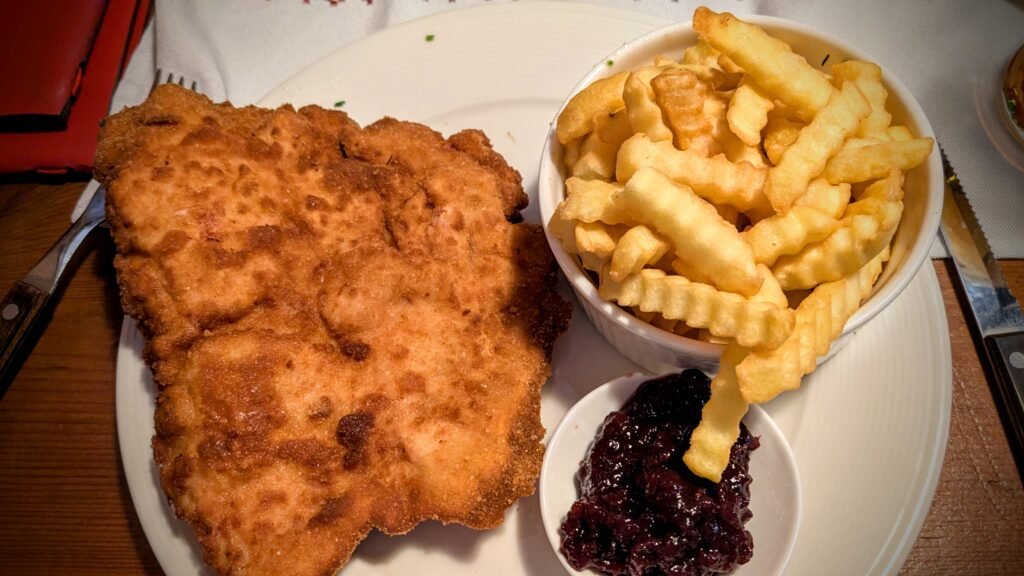
The Austrians I know choose schnitzel. It may indeed be a local favourite, but if you haven’t grown up with it and have no emotional connection, you’re probably better able to see it for what it really is. Don’t get me wrong, schnitzels have a role to play, especially for the tired and hungry tourist, who cares more about volume than flavor. But, isn’t eating on holiday supposed to be about sampling new things that you can’t easily replicate back home? Anyway, let’s tuck into some of the more interesting Austrian food, shall we?
WHAT TO EAT IN AUSTRIA INSTEAD
To successfully avoid the ever-present Schnitzel and Sacher Torte/Apple Strudel combo, you’re gonna need to learn about the other tastier Austrian dishes, which will equally satisfy even the hungriest tourist after a day of activities and tours in Vienna…
MAIN COURSES
Zwiebelrostbraten
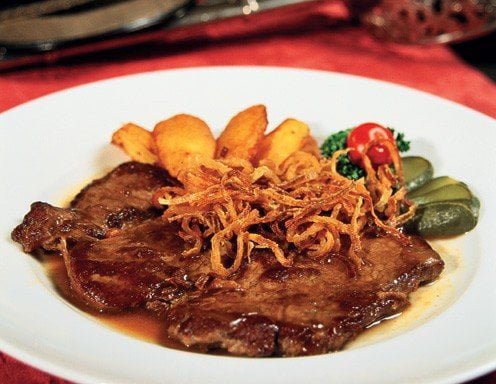
This is basically a cut of roasted beef served in a rich brown gravy, buried underneath a healthy pile of freshly battered & fried crispy onions. It’s typically served with thick-cut fried potato wedges. The vegetable element, as is often the case in Austria, amounts to a single splayed gherkin. Indeed, you’ll probably notice that many restaurants don’t seem really big on vegetables, as such, this dish makes for particularly good winter food. In fact, pretty much all of my favourite Austrian dishes are best eaten in winter time given their propensity to go heavy on the meat and potatoes. It’s beefy, you’ve got crunch from the onions, and some fried potatoes as well, so it ticks some important boxes.
Käsespätzle
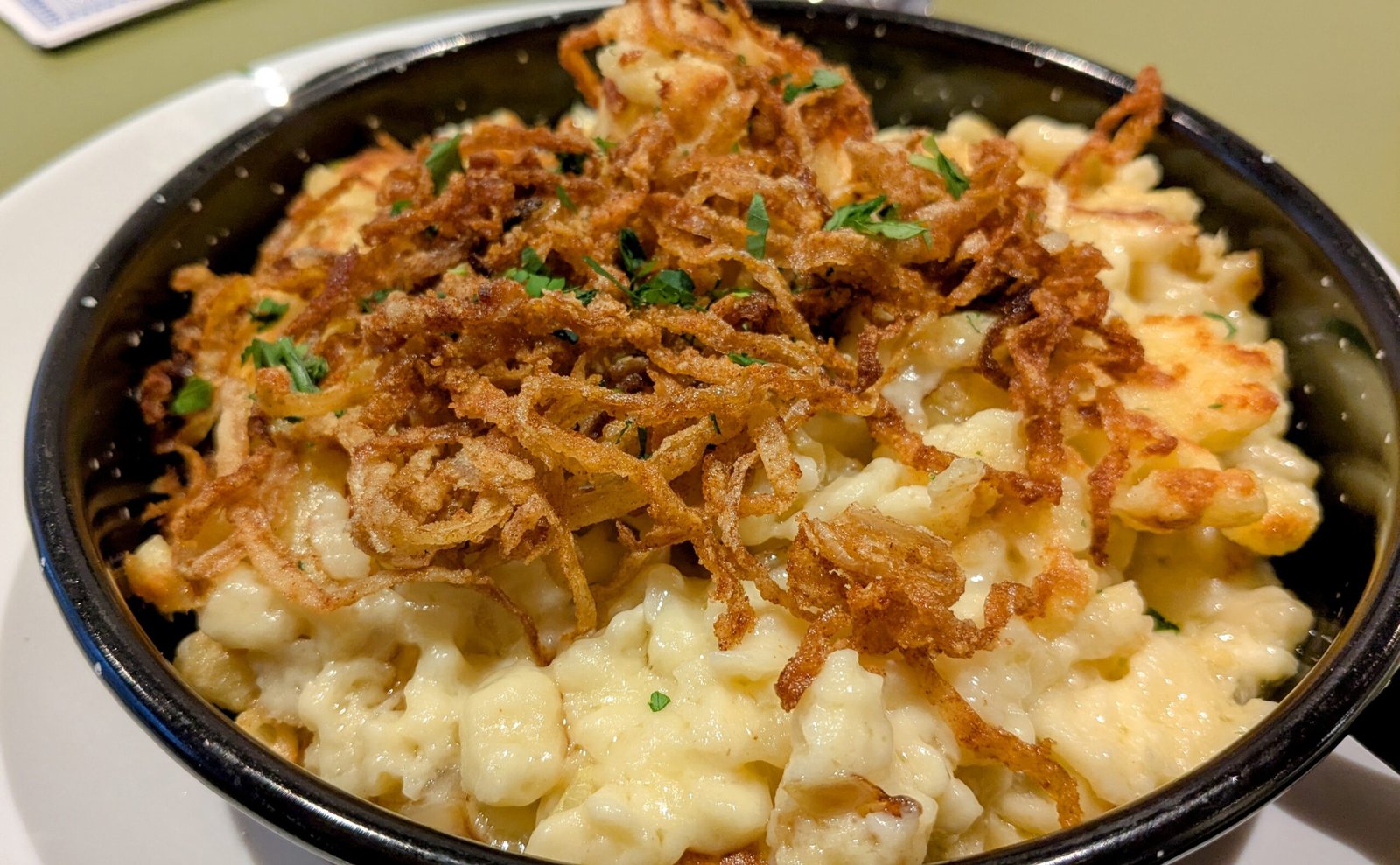
As I said, Austrians actually do winter food very well. Käsespätzle is a prime example of this. Hailing from the far western Austrian regions of Voralberg and Tyrol, this is a dish perfectly designed to fill up hungry skiers and farmers up in the alps. One could describe it as an Austrian version of mac n cheese, although this would be unfair, as Käsespätzle most certainly does NOT come from a packet! The homemade pasta, usually pushed through a colander to achieve a relatively uniform size and shape, is cooked with funky, melty mountain cheeses and topped with crispy fried onions (this seems to be a theme). It does get a bit samey towards the end, but it is very good, and will satisfy even the biggest appetites out there.
Blunzngröstl (spiced blood sausage and potatoes)
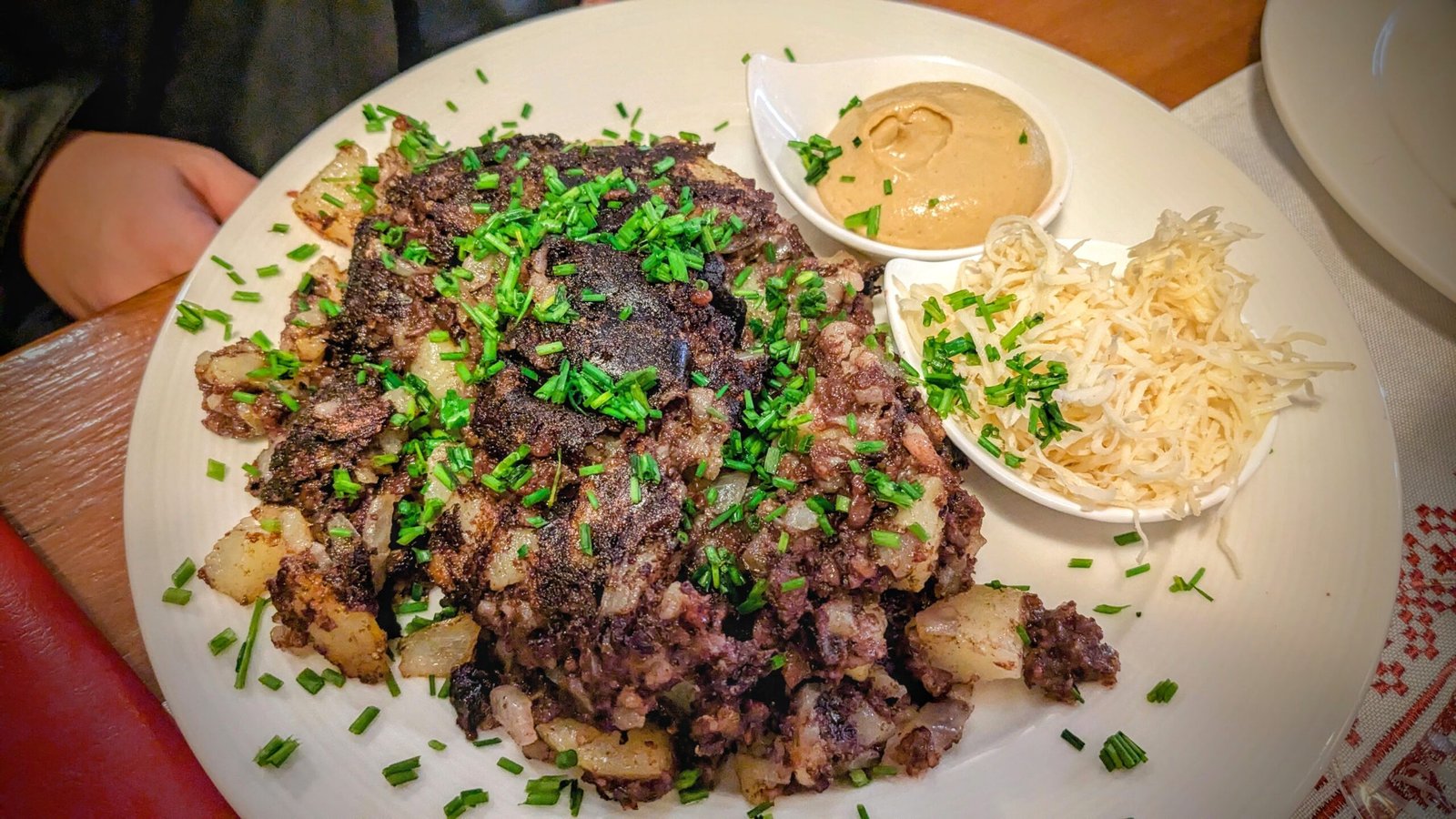
Blunzngröstl is traditional Austrian grub, most commonly eaten in the southern regions of Styria and Carinthia. It’s a combo of sautéed potatoes, onions, and the star of the show – blood sausage (blunzn). The mere sound of this, and a cursory look at the ingredients (pig’s blood, fat, and various spices) is usually enough to put most people off, but that would be a mistake.
Whereas in Britain, ‘black pudding’ is often grainy, and tastes like cardboard, the Austrian version is softer and well spiced. Cooked together in a pan until crispy and golden brown, the aesthetically challenged final product is then served with a generous portion of freshly shaved horseradish, which adds a wonderfully sweet and hot burst of flavour through the dish. Hearty, earthy, and yet another comforting winter warmer. Don’t judge this book by its cover.
Schweinsbraten

Austrians eat the most pork per capita in the European Union. They love the stuff – as evidenced by the sheer number of sausage stands around the city. A very solid go to Austrian restaurant dish is Schweinsbraten, which you’ll find on pretty much every Austrian restaurant menu.
Expect a generous slice or two of roasted pork belly, served with a thin gravy, a bread dumpling and a side of sauerkraut, which adds the required acidity to complement the pork. When served in a traditional Heurige (wine tavern), you often get to inspect the crispiness of the crackling before ordering directly from the counter, thus avoiding the potentially devastating disappointment of soft crackling.
Martinigansl: making November great again
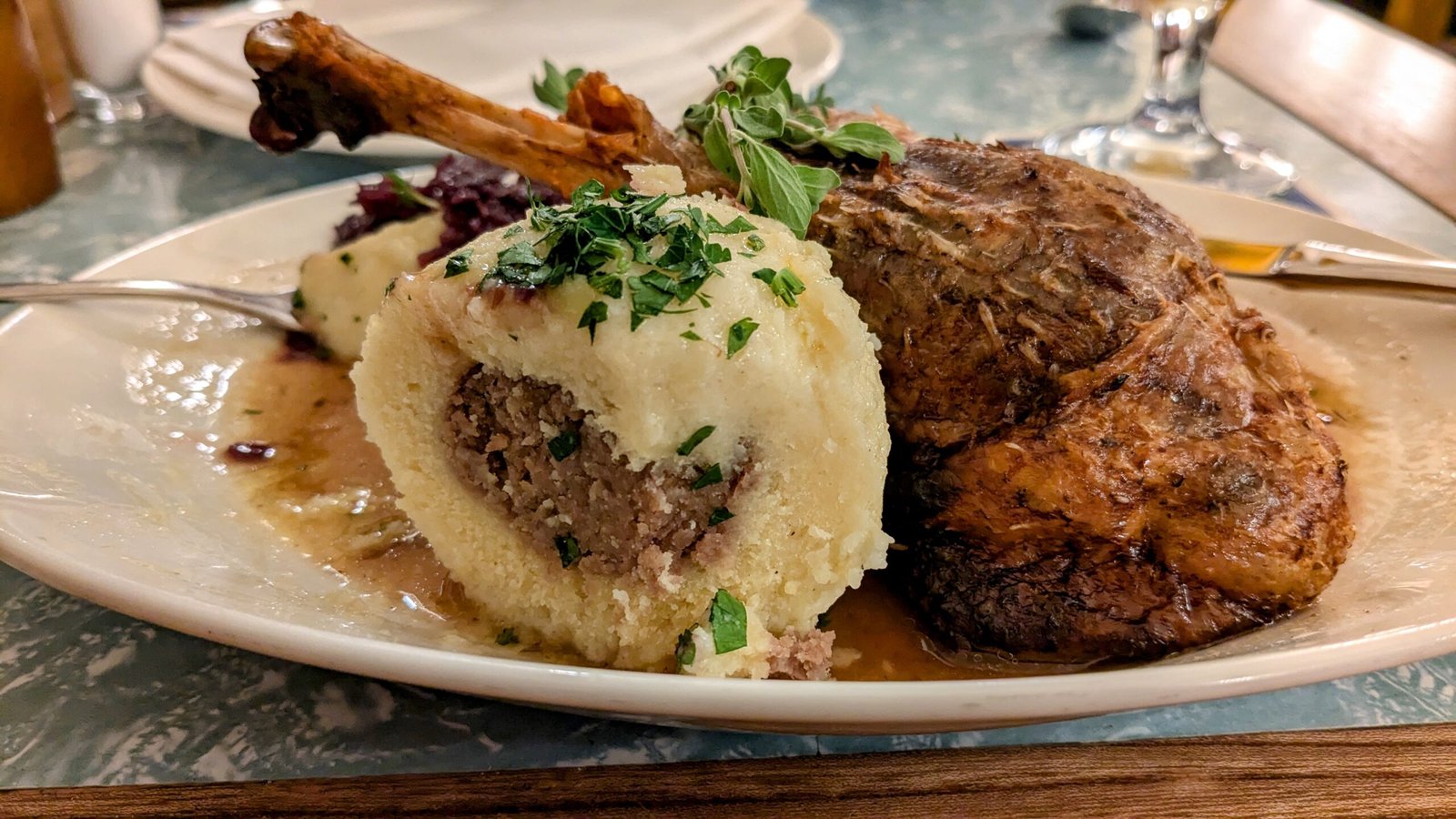
In Austria, Gänsezeit (Goose season) is usually celebrated from the end of October until just before Christmas. There’s nothing better than getting your chops around a roasted crispy goose served with the typical sides; red cabbage, potato dumplings (which you can often bounce like a tennis ball), chestnuts, and sometimes baked apples.
Especially popular from St Martin’s day (Nov 11th) onwards, goose remains a popular dish in restaurants well into December. Restaurants, hotels, and heurigen (wine taverns) offer special Gansl menus during this season, so it’s an ideal time for tourists and locals alike to get stuck in.
Fiakergulasch: Gulasch but better
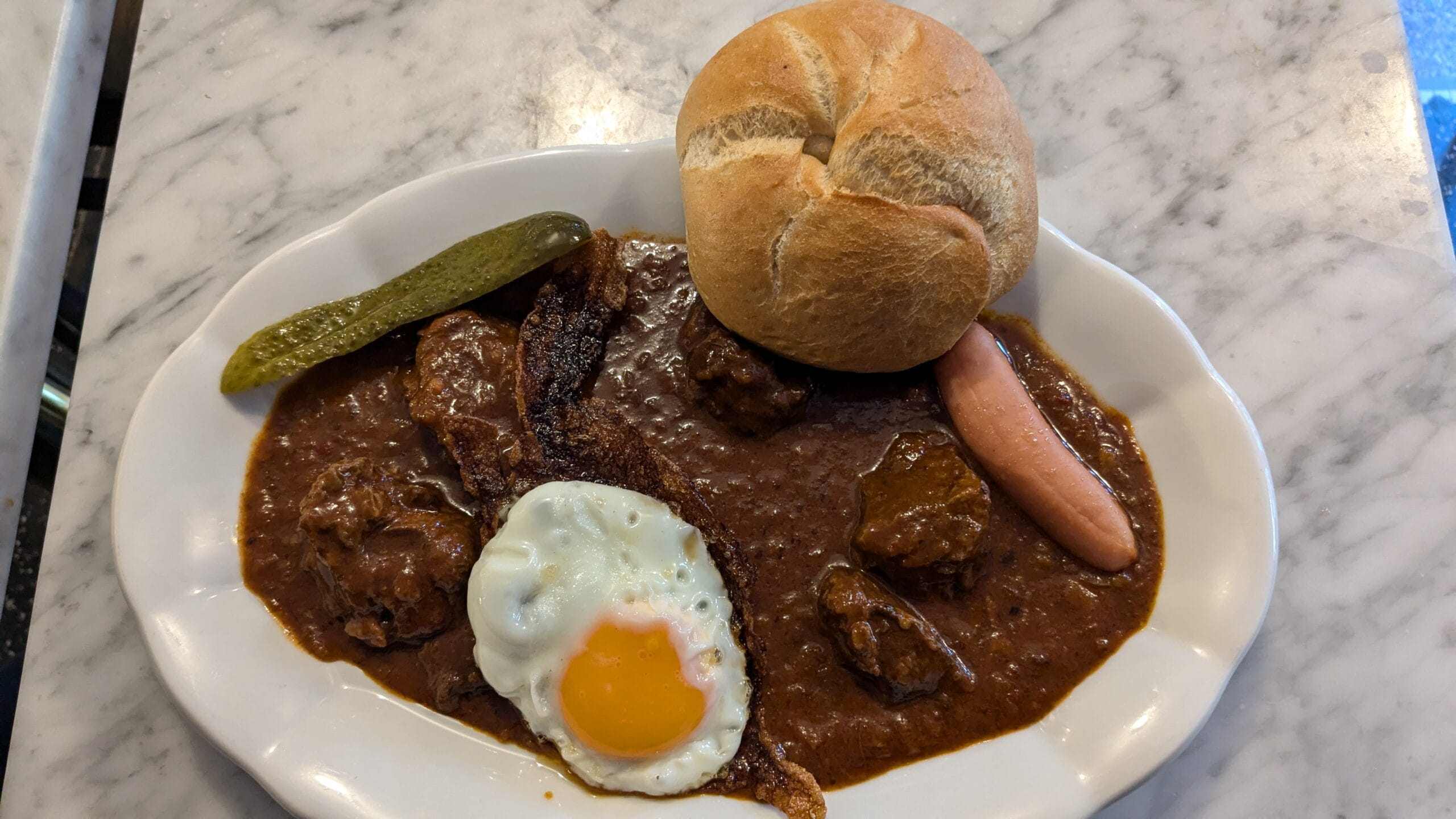
Rustic and filling, the Fiakergulasch isn’t fine dining, but it is very Austrian. Loved by drivers of Vienna’s horse drawn carriages, the Fiakers would chow down on this hearty meal after a long day staring at horse butts. It’s a rich Austrian goulash (thicker than its Hungarian counterpart), some form of carb, a fried egg on top and a cheeky little sausage as well.
Available year round, this is Viennese comfort food 101, and a solid winter warmer. The stars of the show are the slow cooked beef, onions, paprika that make up the stew base. Much improved when served with either Spätzle (Austrian pasta) or bread dumplings rather than just a bread roll.
DESSERTS
Kaiserschmarren
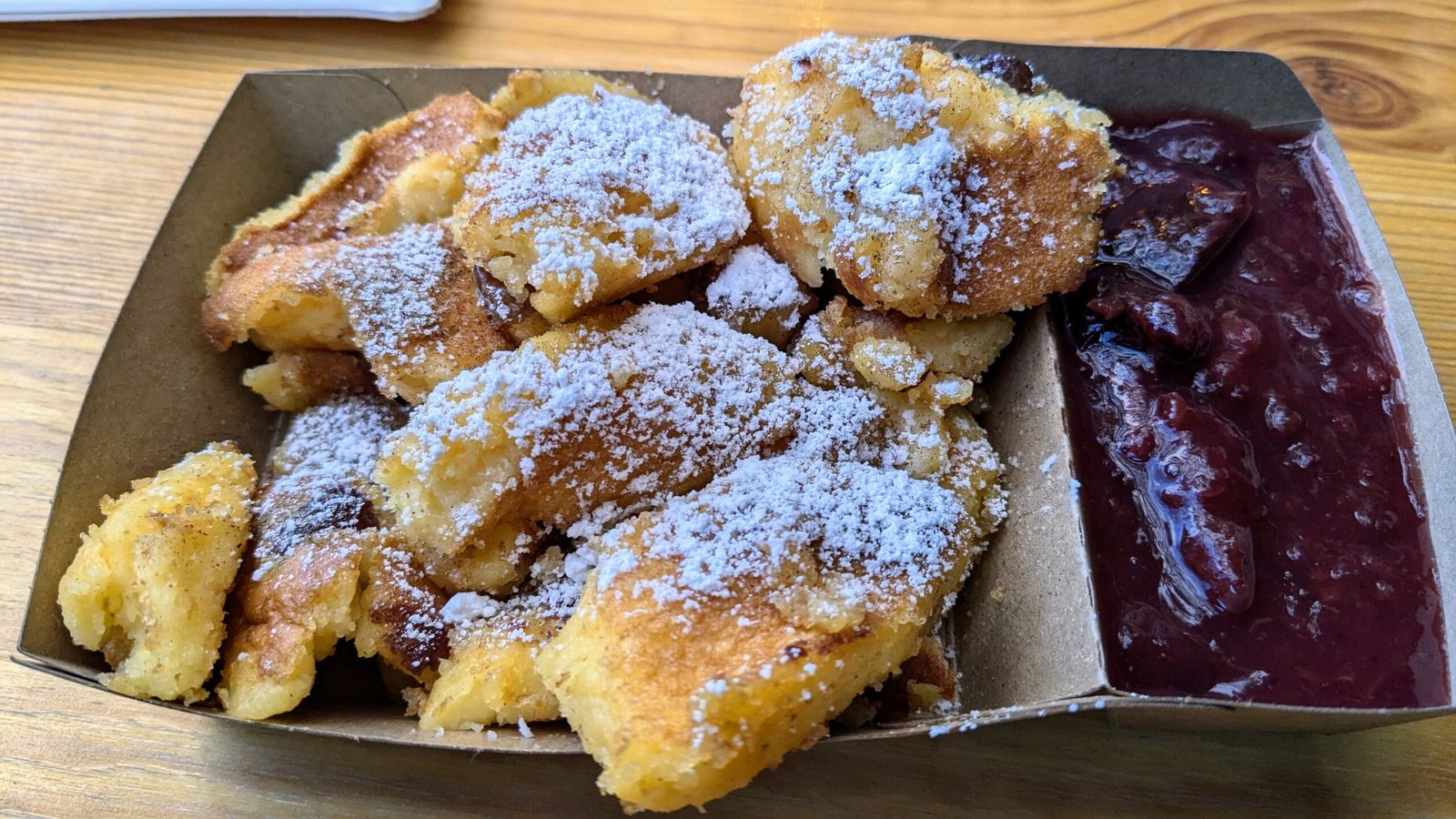
Kaiserschmarren translates to ‘Emperor’s mess’, as it was reportedly Kaiser Franz Josef’s favourite dessert. Essentially, this is a light and fluffy, yet thick pancake, diced up into large chunks, and flambéed in butter, sugar and rum to give a beautiful caramelised crunch. It’s then dusted with icing sugar and normally served with a chilled plum compote on the side. Apple sauce may also be offered depending on where you get it from, but I’ve only ever had it served with plum compote.
When you order it, alarm bells should ring if they don’t warn you that it will take about 20 minutes or so to prepare. Kaiserschmarrn has to be made fresh to order – the key element which makes this much better than all other pancakes is its whisked egg whites. Otherwise expect dense, rubbery chunks. You’ll often find Kaiserschmarren at Christmas or Easter markets, but avoid those in favour of freshly made ones at a decent restaurant.
Marillenknödel

Marillenknödeln are apricot dumplings. Take an apricot, wrap it in a mashed potato or quark dough with the other things you need to make a dough (eggs, flour etc.), boil it, then roll it in a sugary, buttery breadcrumb and there you have it – another massively filling dessert. Marillenknödel are especially beloved in the Wachau Valley in Lower Austria, where the growing conditions for Apricots are ideal.
Vanillekipferl
These labour intensive little crescent-shaped cookies are probably the most festive of all Austrian treats. Beloved for their crumbly texture and sweet, nutty flavor, Vanillekipferl are made with a buttery dough of flour, ground almonds (or hazelnuts), and vanilla. After baking they are dusted with vanilla-infused powdered sugar to create a lovely buttery, sweet, vanillary bite.
Originating in Vienna, their crescent (kipferl) shape is said to symbolize the Ottoman crescent, and is linked to Austria’s historical victory at the Siege of Vienna in 1683. Vanillekipferl are a beloved part of Austrian holiday baking traditions, and they are attempted by many an Austrian family (mine included) throughout advent.
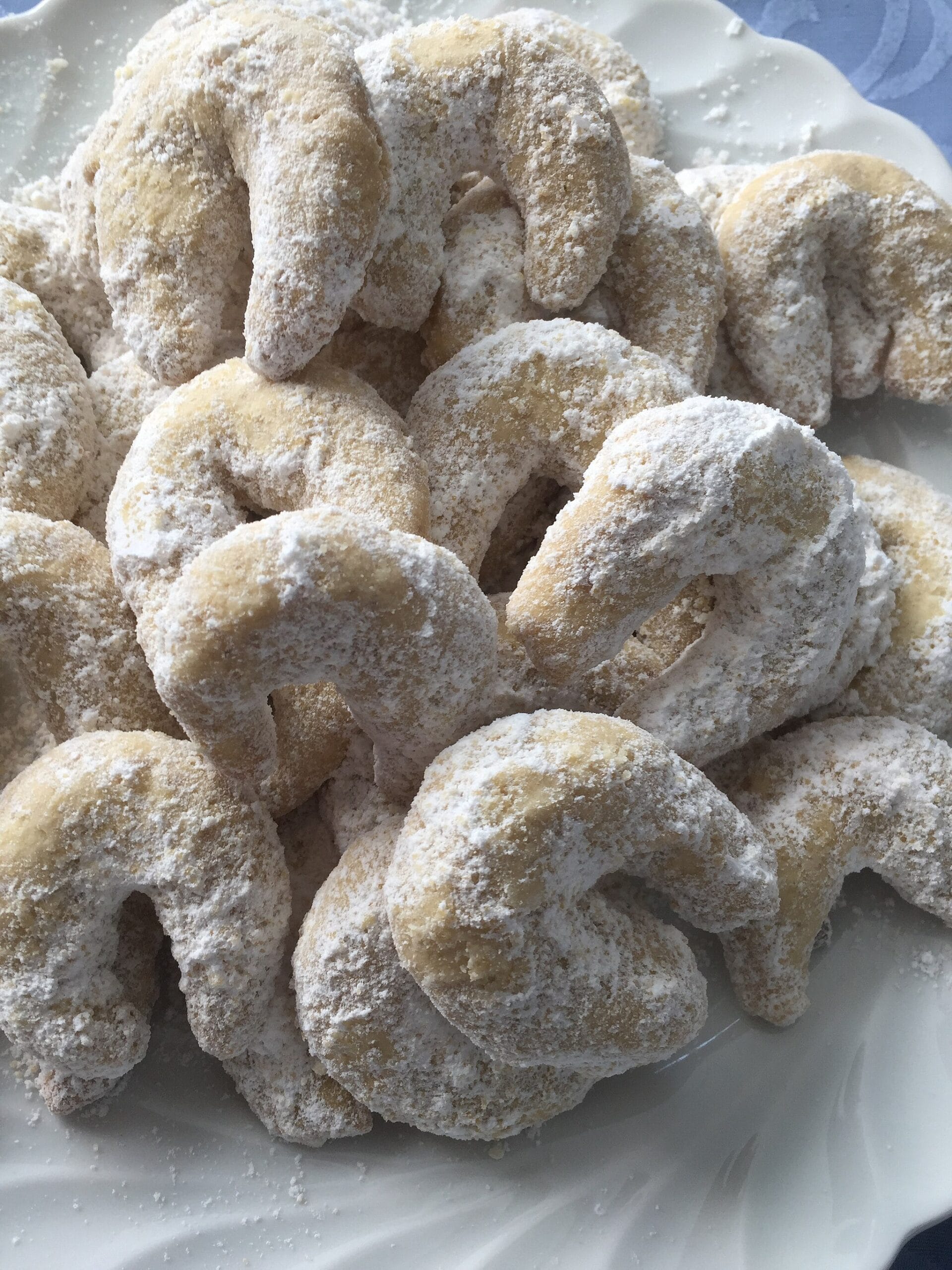
SEASONAL EATING IN AUSTRIA
While it may seem that I like to trash Austrian food, to their credit, this is a country that eats very seasonally, and some of these seasonal dishes are among the best you’ll find in Austrian restaurants. If you’re in country during these times then get stuck in to whatever is in season on the menu, and enjoy the additional smugness of ‘saving the world, man’.
In April, Austrians prepare some really interesting pastas, pestos and risottos with Bärlauch (wild garlic), in May both green and white asparagus, or Spargel in German, steals the show (white asparagus has a tough exterior, needs to be peeled, grows underground, but otherwise still makes your wee smell weird), in June it’s Marillen season (apricots), Eierschwammel (Chanterelle mushrooms) in late summer, Kürbis (pumpkins) in October, and goose in November.
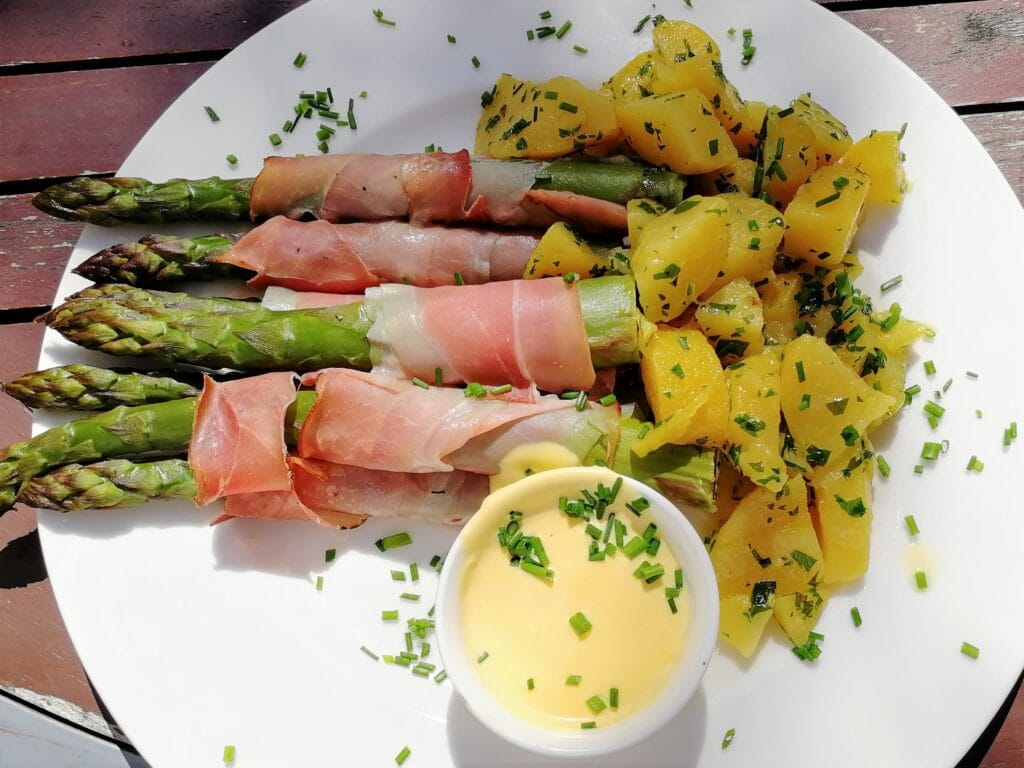
THE BEST FOOD TOURS IN VIENNA
Ok, I’ll admit it, I do actually enjoy the simplicity and heartiness of Austrian food (vegetarians excluded, who doesn’t love fried meat and potatoes?), and I recognise that Austrian food simply mirrors Austrian service – no frills, no nonsense, does the job.
For those of you who want to immerse yourselves in the local food culture, there are several top food tours in Vienna to join:
If you’re around in November or December then check out the Vienna Christmas Market Food Tour with Venture Vienna. They take you to a few of the city’s more off-the-beaten-path markets, away from the tourists, to enjoy some of Vienna’s most iconic festive street food & drinks.
For a year-round general overview of Vienna’s food scene check out this small-group Tastes of Vienna tour, which takes you to places you wouldn’t find on your own, including Vienna’s 10th, 16th and 7th districts. Expect Austrian staples of pork belly, Goulash, Strudels, coffee and more.
For all you sweethearts out there, indulge your sugar cravings on the Sweet Secrets of Vienna Dessert Tour, where you’ll consume enough chocolate, pastries and sweet treats to level up your diabetes game.
And, even though I’ve been trashing it, if you want to learn how to cook the big-hitting Austrian king and queen of cuisine (schnitzel and apple strudel), then knock yourselves out with a meat-bashing, apple-rolling workshop at this Austrian Cooking Class.
Wine Tours in Vienna
Vienna is the only capital city anywhere in the world with its own wine making tradition and it is surrounded by some top quality wine regions. If you want to learn more about Austrian wine then check out this full-day Vienna Woods Wine Tour in the gorgeous Thermal Region (just 30 minutes south of the city). Expect a morning hike through the vineyards and an afternoon tasting with a brilliant local producer in summer, or two tastings either side of lunch in the winter months.
AUSTRIAN FOOD: FINAL THOUGHTS
Whether it’s Käsespätzle, Blunzngröstl, Apricot Dumplings, or yet more pork, eating traditional food in Austria doesn’t have to always mean Schnitzel!
And if you’re looking for a broad overview of what’s out there, joining a local food tour is a great way to orient yourself, and to get an idea of where and what to eat in Vienna.
Austrians don’t f@ck about when it comes to portion sizes, so if you ever leave a traditional restaurant hungry then it’s probably time to have a long hard look at yourself, assuming you have a wide enough mirror, of course. By the way, if you’re a light eater and you’re out with friends or family, then it might be worth sharing a main course, otherwise a lot of good food may go to waste.
Anyway, check out part 2 to this post with my favourite Austrian dish – the Viennese pork knuckle. And if you want something local to wash it all down with check out my post on Austria’s signature white wine – Grüner Veltliner, or my beginner’s guide to the wonderful Riesling, which thrives in the wine regions in and around Vienna and Lower Austria.
Bon appetit, or as the Austrians say, ‘mahlzeit’!

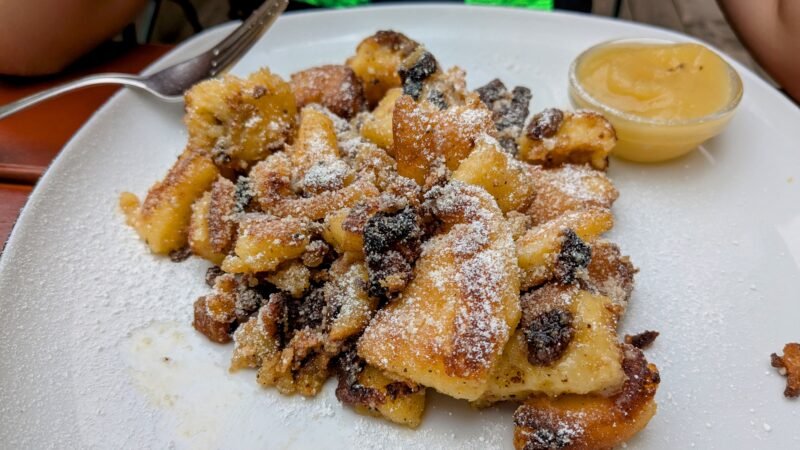



I am salivating at the thought of the dessert!
A very informative and well written description!
Most restaurants will give you a doggy bag (if too much food)without batting an eyelid so no food that you have paid for gets wasted. It’s the norm to ask.
You are absolutely right on the doggie bag front – thanks for this. Don’t be shy to ask, folks…